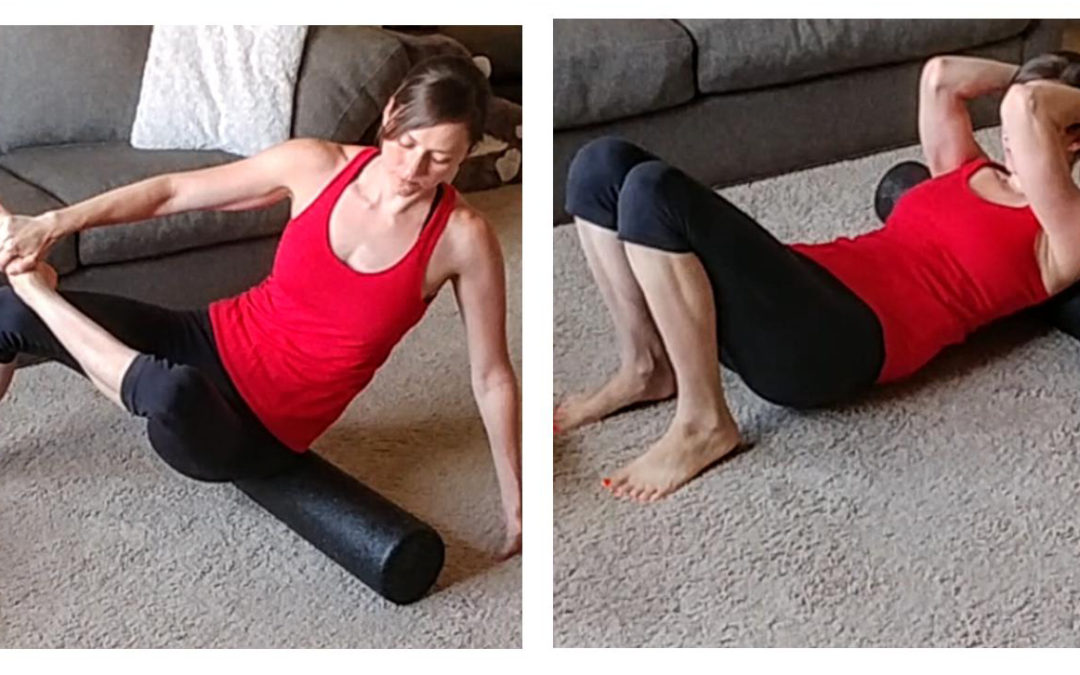While some of you I know are pretty religious about foam rolling daily, I know there are plenty others who are still a bit “in the dark” as far as the “why’s” and “how-to’s” of foam rolling.
Once only a technique used by physical therapists, athletic trainers, and fitness professional, “self-myofascial” release has gained popularity in the mainstream populations over the past few years. If you are unfamiliar with the concept, foam rolling is basically a “self-massage” you can perform on various parts of the body using only a roller made of high density foam (or various other materials) and the pressure from your body weight. Using the applied pressure on the roller, you basically “hunt” out tight tender spots commonly known as “trigger points” to release tension.
It looks like this (click the pic for full video)…
We are huge proponents of foam rolling at FFC, however we do want to make sure that you are utilizing this tool correctly when it comes to your training! So, we are going to answer both the questions “When?” and “How?” real quick for you to clear up any confusion.(I have also included a link to a video I did recently that shows you how to foam roll various parts of the body.)
1) When?
I know many people like to jump on the foam roller before they start their dynamic warm up, but you may not NEED to do as much foam rolling as you are currently doing prior to lifting. If you have “problem areas”, such as chronically tight hips, quads, or lats, then it may not be a bad idea to briefly jump on the roller prior to starting your warm up and corrective exercises to help gain more mobility. Another pre-workout situation where foam rolling can be beneficial, is when you need to roll a specific area that is still very sore from a previous workout. However, a “full body roll” before you exercise isn’t really necessary.
In fact, foam rolling is meant to help trigger the RECOVERY process after a workout, and can help your body to enter a state of relaxation. Too much time on the foam roller prior to a workout may actually “relax” you TOO much going in to your workout, which can make it more difficult to rev up your energy to give your session 100% effort. It’s best to wait until directly AFTER your training session to jump on the roller, as this will help to speed up the rate at which your muscles recover. If you don’t have time to roll immediately after your session in the gym, the next best option would be to keep a roller at home. Foam rolling before bed is a great option because it both helps to relax your body, and jump starts the recovery process that your muscles under-go while you are sleeping.
1) How?
If you are doing a “full body roll” with the intention of simply relaxing muscles worked during training, 5-10 slow “swipes” up and down each muscle group should be plenty to achieve the desired results. If you encounter tender spots (“trigger points”) during your foam rolling session, you want to focus between 10 and 15 smaller range swipes beginning and ending just around the area of concern. Using slow deep breathing is also critical throughout your entire session, as this will help you to relax better and achieve greater success in releasing muscle tension.(Various “massage balls” can be used to target smaller , harder to reach areas applying these same principles.)
**I recently put together a video demonstrating how to roll the major muscle groups in the body.You can check it out by clicking here: Foam Rolling Video**
Please respond to this email or give us a call at 239-596-6200 if you have any questions!
Dedicated to your success,
Mara
P.S. Now that “season” is winding down, we will be offering a 20% Summer Discount off of ALL of our 1 month trial memberships. If interested please respond or call 239-596-6200 to get started NOW!
Florida Fitness Coaches
15495 Tamiami Trail North unit 104
Naples, FL 34110
“Changing lives with cutting edge fitness solutions”



Recent Comments